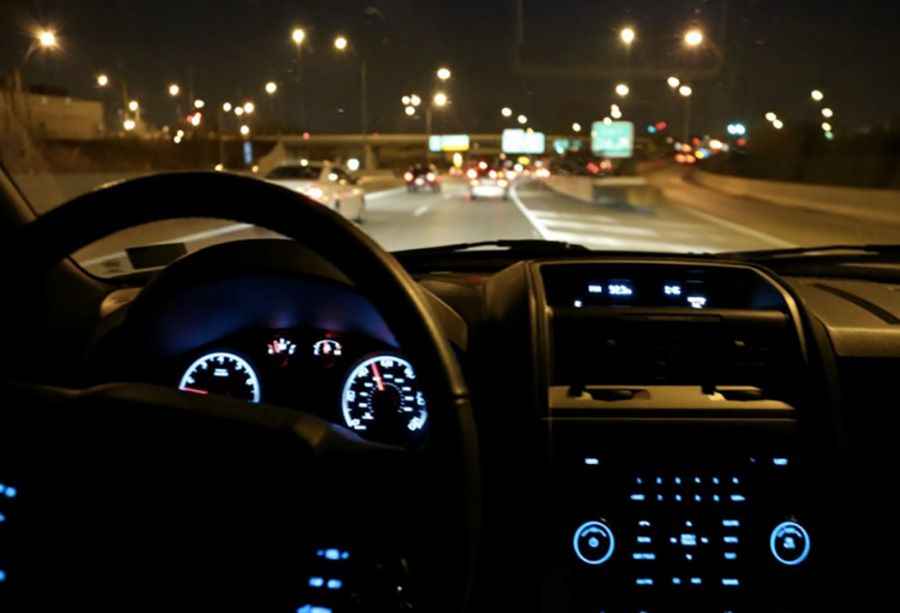7 Safety Tips For Driving At Night On The American Roads
Driving at night is definitely more risky than in the daylight. According to the National Highway Traffic Safety Administration, three times more fatal crashes occur at night than during the day (NHTSA). The fundamental reason behind this huge figure is the low visibility. Oddly enough, certain types of light, such as bright light glare, can make the roads more dangerous for other drivers.

Here are the 7 methods you can use to reduce your risk while driving at night.
1. Keep Speed In Check
At night, the visibility is low and so is the reaction time less. Therefore, speeding more than the allowed limits can cause deadly accidents. It is observed that 37% of fatal accidents at night are due to overspeeding compared to 21% during the day. For example, headlights normally shine 160 feet ahead, but even at 40 mph, it takes 190 feet to come to a complete stop. Speed cameras have also been installed on the roads to keep the speed in check. Russ Rader of the Insurance Institute for Highway Safety (IIHS) recommends that a driver should adjust their speed depending on many factors like visibility, the road and weather condition, traffic congestion, etc.
2. Drowsy Driving
According to the NHTSA, drowsy driving crashes are most common between midnight and 6am. Around this time of the night, it is advised to either avoid driving or remain more cautious and vigilant while on the road. Get some caffeine in the body if you are planning to drive, or simply pull over in a safe spot to relax. Other ways to avoid drowsiness while driving include turning on the music, or rolling down. Other activities suggested by some drivers include turning on the radio (not too loudly), rolling down the windows for fresh air, avoiding medication that may interfere in sleep, and munching on something.
3. Keep The Windshield And Headlights Clean
According to the National Highway Traffic Safety Administration, a dirty or broken windshield can lower the visibility as small cracks can scatter the light and increase the glare effects from the lights of other vehicles. Similarly, a cracked headlight can dazzle the driver crossing you. Therefore, clean your headlights and windshield regularly. Invest in a good headlight and windshield cleaning kit.
4. Be Prepared For Emergencies
No matter how cautious you are while driving on the road, accidents can still happen. It is important to keep your emergency contact list accessible in case of an accident emergency. If you have been in a car crash, you must also take legal action to prepare yourself for the finances. Personal injury attorneys help car accident clients in legal matters and make the process of recovering the compensation amount quick and smooth. It is advisable to have a car accident attorney’s number saved in your phone.
5. Do Not Put Fixed Focus
Certainly, you should keep an eye on the road while driving but that doesn’t mean to put a fixed gaze on anything and never stare at oncoming headlights. Otherwise your eyes can easily be dazzled by the headlights of oncoming vehicles. It is best to practice by moving your eyes down and to the right, and use lane markings as a guide to stay in the right lane. When you have passed an oncoming car, then look up again.
6. Watch Out For Wild Animals
Deer and other wildlife encounters are more common from fall to winter and usually occur at dusk or at night. Bright lights can help you detect glowing animal eyes. Do not try to swerve and change direction after spotting them. Instead, just decrease the speed of your car.
7. Regularly Check Your Lights
Put your lights to test, including low beams, high beams, fog lamps, flashers, hazard lights, turn signals and brake lights. Additionally, you can get anti-glare dazzling lights or adaptive lighting systems for your car. Keep your headlights turned on in every situation.
Night time driving demands for extra caution and well-preparedness. It is important to stay active and alert. Remember, accidents are preventable if a few safety tips are followed well and every driver acts responsibly while on the road.